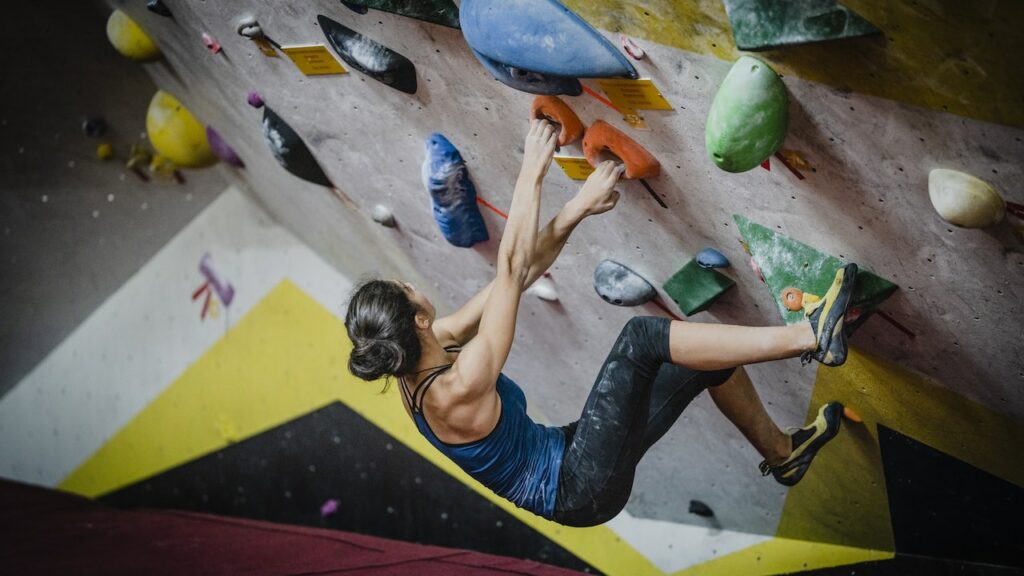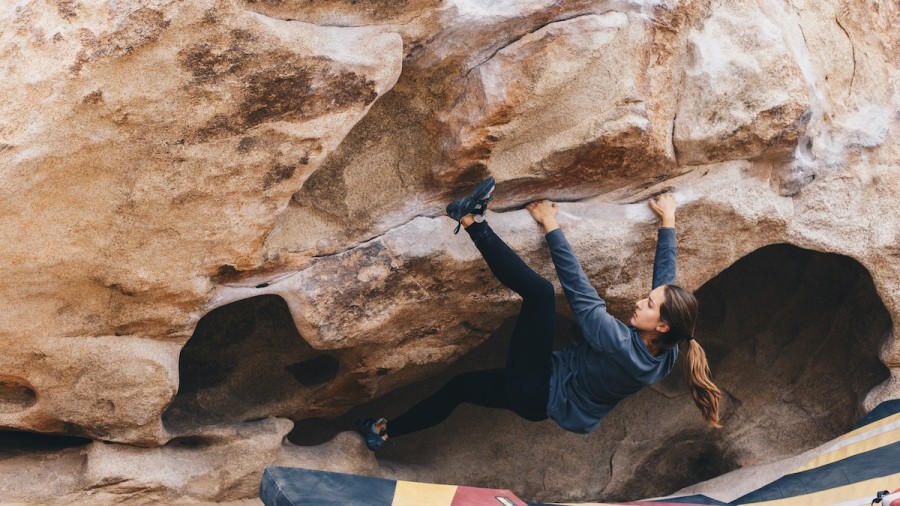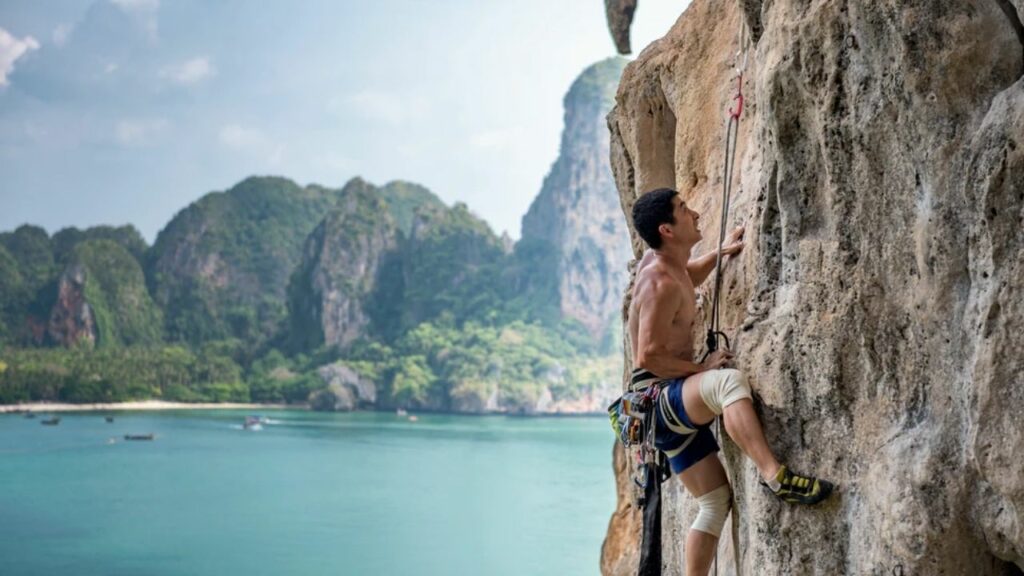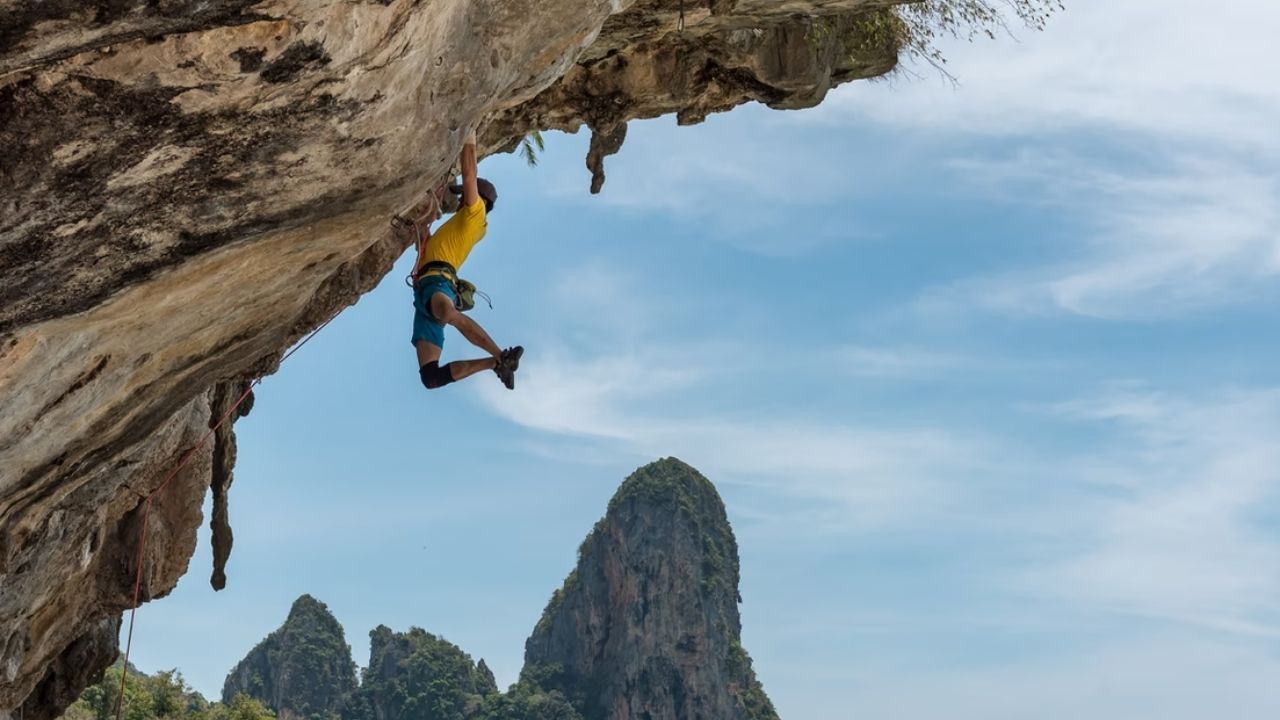Have you ever looked at a towering cliff or rock face and thought, “I want to climb that”? Yeah, me too.
Climbing has become popular for those seeking adventure and physical challenges. However, it’s still just as dangerous and difficult for beginners. It’s quite hard to defy gravity by solely relying on your upper body strength, after all.
So, how quickly can you get better at climbing?
Generally, beginners can expect to get good at rock climbing within a few months. However, developing the skills and strength needed to tackle challenging climbs can take years. It all depends on factors such as your natural abilities, physical fitness, dedication to training, and climbing frequency.
With that in mind, let’s explore the learning curve of climbing and the steps beginners can take to become better climbers.
What does it mean to be good at climbing?
Defining what’s considered “good” in climbing is hard because the criteria are subjective. If you can climb cliffs rated 5.11, you may be considered good by others who can climb lower or the same. But a 5.15 climber may look down upon you.
A good climber can be defined as someone who knows how to properly do basic climbing stuff like tie knots, set up belays or anchors, etc.
Truth is, the climbing learning curve is initially described as a steep climb, followed by a plateau where progress seems to slow down.
Here are some of the most important factors that may affect your learning curve:
- Starting fitness level: If you’re starting from a low fitness level, it may take longer to see progress.
- Natural ability: Some people are naturally better at climbing than others due to factors such as body type, balance, and coordination.
- Consistency: Climbing once a week is better than not climbing at all, but progress may need to be faster.
- Quality of instruction: A good climbing coach can teach proper technique and help you avoid bad habits that could impede progress.
- Mental game: Climbing requires mental toughness and focus.
- Risk tolerance: Some climbers are more risk-averse than others, affecting their willingness to try harder climbs and progress more quickly.
How can you get better at climbing fast?

1. Develop the Right Mindset
Having a growth mindset is essential for improvement in climbing. It means you believe your abilities can be developed through dedication and hard work.
Simultaneously, it’s important to set realistic expectations for yourself. Don’t expect to climb like a pro on your first day. Climbing is a skill that takes time and effort to develop.
2. Build Strength and Endurance
Climbing requires a combination of upper body, core, and lower body strength. Your forearms, biceps, triceps, shoulders, back, and chest muscles will work together to help you pull yourself up and hold onto the wall.
Your legs and glutes will help you push yourself up and maintain balance. Your fingers and forearms play a crucial role in climbing. They’ll help you grip the rock or the climbing holds and maintain that grip for an extended period.
a) Hangboard training
It’s a tool that allows you to hang from various holds to train your fingers and forearms. Hangboarding is an excellent way to build finger and forearm strength and endurance, but it’s essential to slowly and gradually increase the intensity and frequency of your workouts.
b) Pull-ups
Pull-ups are excellent for building upper body strength and training your fingers and forearms. If you’re a beginner, start with assisted or negative pull-ups.
c) Core exercises
Strong core muscles are essential for maintaining balance and stability while climbing.
d) Squats and lunges
Climbing requires lower body strength, and squats and lunges are excellent exercises for building leg and glute strength.
e) Yoga
It’s an excellent way to improve your flexibility, balance, and core strength, all essential for climbing.
Always warm up before your workouts and stretch afterward to prevent injuries.
3. Learn Basic Climbing Techniques
Once you have built a solid foundation of strength and endurance, the next step is learning basic climbing techniques.
Footwork
Proper footwork allows you to use your leg muscles more effectively, conserve energy, and maintain balance while climbing.
To develop good footwork, practice placing your feet precisely on the holds, using the inside edges of your climbing shoes, and keeping your feet level.
Hand Placement
Proper hand placement lets you securely grip the rock surface and maintain climbing balance. When starting, it’s important to focus on using your hands to maintain balance and stability rather than relying on them to pull your body up the wall.

Body Positioning
Proper body positioning allows you to use your body weight to your advantage, making climbing and maintaining balance easier.
Practice shifting your weight from one foot to another while climbing to improve your body positioning.
Breathing
Breathing may seem like a small detail, but it’s essential to climbing. Proper breathing can help you stay calm and focused, conserve energy, and avoid fatigue. When you’re climbing, try to take deep breaths and exhale slowly.
4. Practice Proper Safety Measures
Before embarking on your climbing journey, it is essential to understand the importance of safety and to practice it at all times.
When it comes to climbing, having the right gear is crucial. You’ll need a pair of climbing shoes, a strong harness, rope, a helmet, and a suitable chalk bag.
Along with proper gear, learning and practicing proper safety techniques is crucial. Some safety techniques you should be familiar with include belaying, anchoring, and knot-tying.
Remember, safety should always be your top priority when climbing. It’s better to be safe than sorry; taking the necessary precautions can save your life.
5. Climbing with More Experienced Climbers
It’s an excellent way to improve your climbing skills. This way, you get to learn new techniques and strategies. As an added bonus, you gain confidence and make important connections in the climbing community.
Tips for Finding a Climbing Partner
If you’re interested in climbing with more experienced climbers, there are a few things you can do to find a climbing partner:
- Join a climbing gym.
- Attend climbing events.
- Use social media.
- Ask around.
Tips for Climbing with More Experienced Climbers
If you’re planning to climb with someone who has more experience than you, there are a few things you can do to ensure a safe and enjoyable climbing experience:
- Be honest about your skill level.
- Learn climbing lingo and communicate effectively.
- Be open to feedback.
- Show gratitude.
How to set goals and track progress?

Having goals and tracking progress is essential to any sport or activity. Climbing is no exception.
When setting goals, ensure they are achievable, realistic, and measurable. Break down your goals into short-term and long-term objectives. Short-term goals should be easily achievable within a few weeks or months. Long-term goals can take several months to a year or more.
Some examples of short-term goals for beginners include learning how to tie knots, mastering basic techniques, and increasing strength and endurance. Long-term goals include climbing a specific route or grade, learning advanced techniques, and participating in competitions or climbing events.
To track your progress, keep a climbing journal or logbook. Write down your goals, progress, and the areas where you need to improve. You can also track your performance by recording your climbs, the routes you’ve completed, and the grades you’ve achieved.
Frequently Asked Questions (FAQs)
1. Is it possible to start climbing without any prior experience?
Many climbing gyms offer introductory classes and beginner-friendly routes to help new climbers get started.
2. Should I be in good physical shape to start climbing?
Climbing can be physically demanding, but you don’t need to be a professional athlete to get started. Beginners can start with easier routes and work up as they gain strength and endurance.
3. Can I climb outdoors if I only have experience in a climbing gym?
Climbing outdoors requires additional skills and knowledge, such as how to set up anchors and protect yourself from falling rocks. It’s best to gain some experience in a climbing gym before attempting outdoor climbs.
4. How often should I practice climbing to improve my skills?
The more you practice, the faster you will improve. Beginners may aim for 2-3 climbing sessions per week, but the frequency will depend on individual goals and schedules.
5. Is it possible to climb without a partner?
Some types of climbing, such as bouldering, can be done solo. However, climbing with a partner is always recommended for safety reasons.
6. How quickly can you get better at climbing?
With consistent practice and climbing frequency, you can get better at climbing in just a few months.
7. Can I climb two days in a row?
Beginners can climb two days in a row, but listening to your body and avoiding overexertion are important. It’s common for beginners to experience muscle soreness and fatigue after their first day of climbing, so give your body time to rest and recover before attempting another climb.

